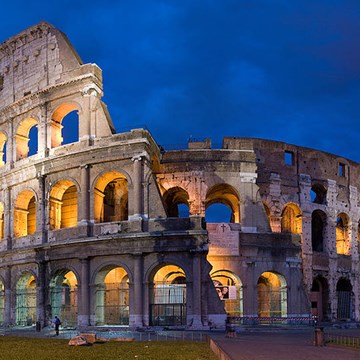Celeia - a town beneath today's town
The archaeological exhibition site in the cellars of the Princes Palace is the largest presentation so far of the remains of Roman Celeia in situ. Its silent yet picturesque testimony invites you to walk among its ancient walls, which bear witness to the town’s rich history.
As early as prehistoric times the favourable, protected position beside a bend of the River Savinja, the rich hinterland of the Savinja valley and the intersection of trade routes beckoned our ancestors to inhabit the area of present-day Celje. The oldest settlement on the hill Miklavški hrib is known from the late Bronze Age and early Iron Age (9th to 6th century B.C.), while the Celtic Tauri tribe established one of their important centres on a terrace of Miklavški hrib (above the town park) in the late Iron Age. Remains of a mint for silver coins, among other things, testify to the significance of this Celtic settlement.
In 15 B.C. the kingdom of Noricum, and the oppidum of Celeia within its scope, was annexed to the Roman state. During the rule of Emperor Claudius (41-54 A.D.), in the period when Noricum became a Roman procuratorial province, Celeia was one of the first in the province to acquire the status of municipium (independent town), with the full name Municipium Claudium Celeia. The following two centuries represented the period of the town's greatest flourishing and also of physical growth. During the late classical period Celeia became much smaller, and after the turn of the 6th century, the once flourishing town is hardly mentioned any more.
See also our virtual presentation of Celeia - a town beneath today's town.
Exhibitions and events

Od gotike do historizma po korakih
Permanent exhibitionRazstava je umeščena v okvir stalne Kulturno in umetnostnozgodovinske zbirke Pokrajinskega muzeja Celje v I. nadstropju Stare grofije in je namenjena vsem obiskovalcem z okvaro vida. ...

The Counts of Celje
Permanent exhibitionExhibiton The Count of Celje is on display in 1st and 2nd floor of Princes Palace in Celje. The Counts of Celje were one of the most influential noble families in the Slovenian lands in the Late...

The lapidary collection
Permanent exhibitionThe cellars of the Old Counts’ Mansion feature a Roman lapidary collection on an area of 440 m2. Inscriptions and reliefs in marble from Pohorje witness to the affluence of the citizens of...

Cultural and art history collection
Permanent exhibitionCultural and art history collecton is presentet in a building known as the Old Counts’ Mansion. Visitors can view the objects of the art and cultural history collection on the arcaded...
Activities from this museum
We don't have anything to show you here.










